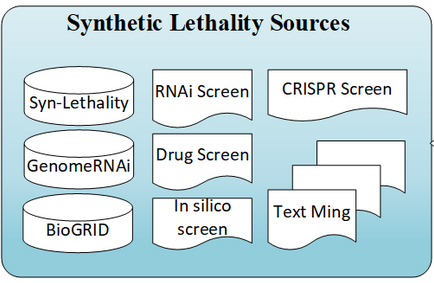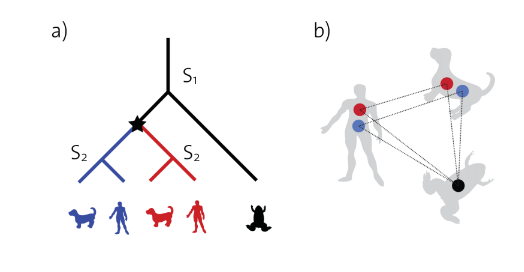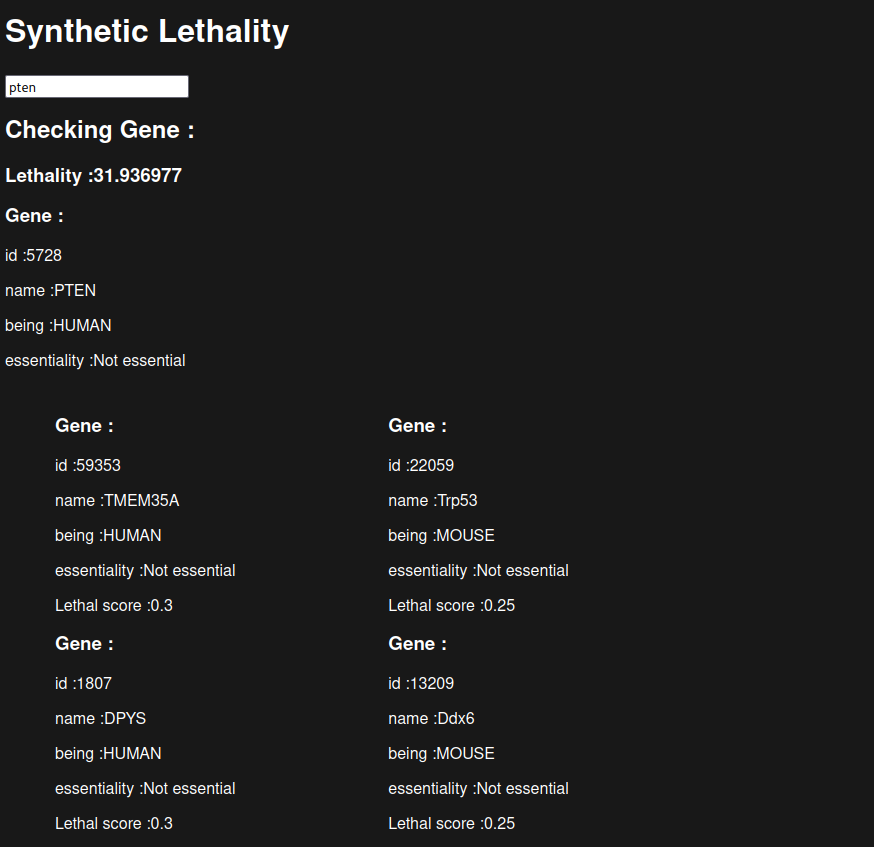This project is giving specialists the ability to quickly get a lethality score of a gene and producing a list of all it’s synthetic lethal pairs. It also uses two other beings for better results because human genes are not tested very well.
-
Ilming Winnie (parser)
-
Tobias Aichinger (transform, visualize)
-
Nikolaus Alexander (Documentation)
-
Breinesberger Markus (Documentation)
The SynLethDB is used for getting the synthetic lethal pairs for the different beings (Human, Mouse and Yeast). We only used teh SynLethDB because it uses data from BioGrid. See:
For gene essentiality OGEE (Online GEne Essential database v3.09) is used. There are two different types of essential genes
-
CSEGs Cancer-specific essential genes
-
CEGs Core-essential genes
Criteria used for classifying CSEGs and CEGs: CSEGs - Genes tested in more than 10 cell lines and essential in only one particular cancer. CEGs - Genes essential in 80% or more tested cell lines.
In the architecture above you can see that we have three layers in our project. Starting with the parser, continuing with the transformer and the last thing is the visualizer.
Here we use a go program which reads all the files and brings the data the form of our erd which then gets inserted into the database.
Transform is a axum web application framework which has a single get request taking a gene identifier (name) as a path parameter and returns the transformed data (⇒ meaning we get the gene from the identifier from the database, and then we use that gene to map it to the other beings we have. After that we check if one of the genes is synthetic lethal and for the case of other beings we check that the gene is also contained in the human)
Visualize is our frontend where you have a user interface for entering a gene identifier after that we get the gene from the database (or a gene not found we don’t know it), then we show three rows in the first row there are the lethal pairs for human genes in the second the lethal pairs for mouse genes and in the third row are the lethal pairs for the yeast genes and also a score we calculated
The score is not in percent or something it is just a rough number we calculate using the sum of the lethal pairs where we multiply the lethality score with the gene essentiality score which filters out the pairs where the gene is not essential.
Here is the code for the score calculation:
let mut score = genes.request_gene.essential_score.unwrap_or_default();
let pred = |g: &Lethal| -> f32 {
g.lethality_score * g.gene.essential_score.unwrap_or_default()
};
let lethality_score =
genes.yeast_genes.iter().map(pred).sum::<f32>()
+ genes.human_genes.iter().map(pred).sum::<f32>()
+ genes.mouse_genes.iter().map(pred).sum::<f32>();
score += (1. - score) * lethality_score;This setup was tested on arch linux(but it should also work for other linux distributions like ubuntu)
-
Dependencies
-
go (version. go1.20.11)
-
rust (version. cargo 1.73.0/nightly toolchain)
-
trunk (cargo install trunk)
-
-
docker
-
after installing these things you should be able to run the start.sh file in the root of the project
chmod +x start.sh
./start.sh

